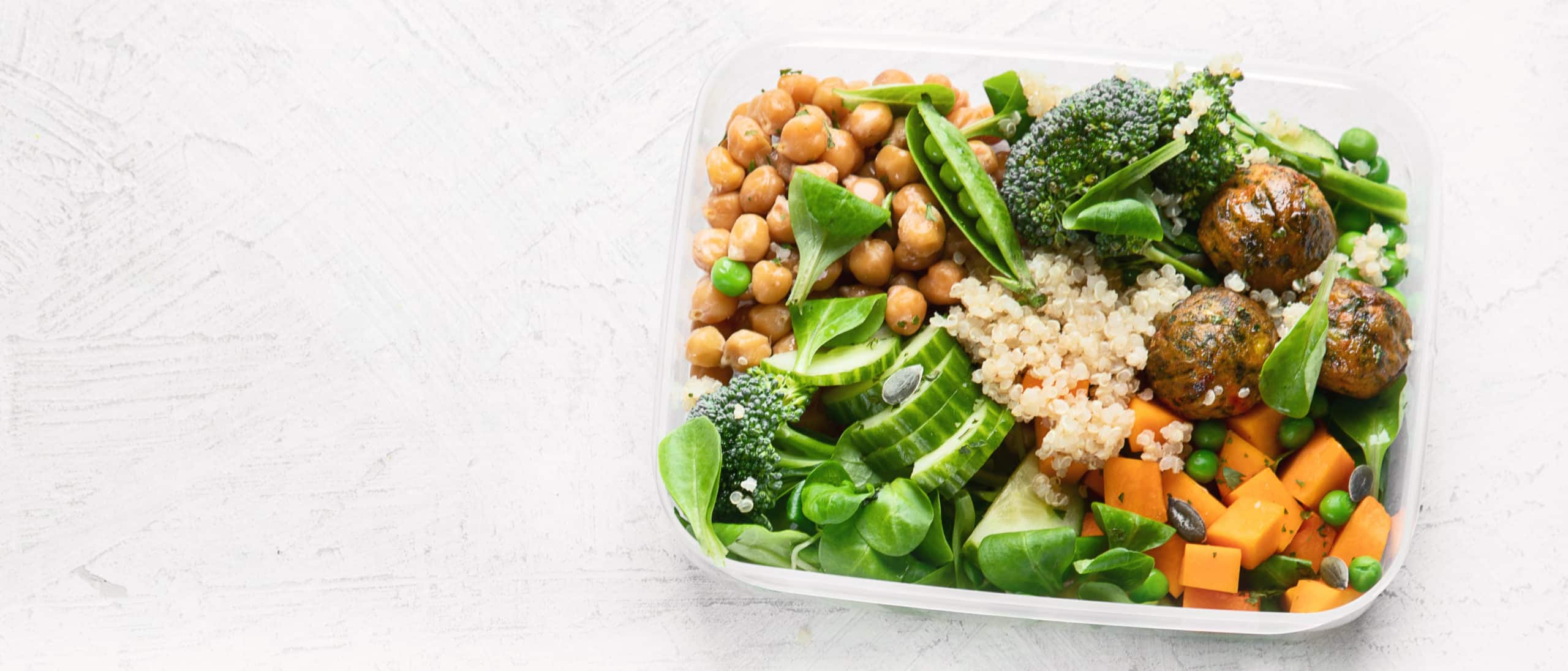- Blog
- Food & Agriculture
- Climate-Friendly School Food
- How I got my school district to combat climate change by changing what we eat
How I got my school district to combat climate change by changing what we eat
by Sarah Dosanjh, Milpitas High School student

Donate Now!
Your contribution will benefit Friends of the Earth.
Stay Informed
Thanks for your interest in Friends of the Earth. You can find information about us and get in touch the following ways:

Growing up in California, where forest fires and droughts are a regular occurrence, climate change has had a big impact on my life. As a student, I see climate change as a major concern — but I also see effective strategies to address it, like encouraging plant-forward food in our schools.
So…why did I start this project?
Before I started advocating for plant-forward food in my school (Milpitas High School), I always explored individualistic ways to reduce my impact on the planet, such as using reusable straws and bags. As climate change became more daunting and apparent in my life, I wanted to take significant action that went beyond my individual behavior. During the summer before my junior year of high school, I became a mentee for the Advocacy Institute program at the Factory Farming Awareness Coalition (FFAC). Through webinars, group discussions, and project work, I learned that diet has a huge impact on the planet–especially the consumption of animal products. In my mentorship, I had the opportunity to connect with Friends of the Earth (FOE). After listening to their presentation on how important plant-based options are in school cafeterias, I began reflecting on the state of my own school district’s menu.
Growing up, we were always served greasy, cheesy food options at school, mostly made of animal products. I recall several instances where I was not allowed to have the healthier, vegetarian option since I was not officially registered as “vegetarian” by the school. My high school cafeteria’s menu consisted mainly of burgers, pizza, and beef tacos. Connecting with FOE helped me realize that there were few if any healthy, vegetarian or vegan options offered throughout my entire school district. This is true for most of the schools throughout the state of California and the country.
When students grow up in schools where meat, dairy, and other animal products are the only options on school menus, they are being encouraged to consume these foods and will continue to eat similar diets into adulthood and beyond. This overconsumption of animal products harms not only the planet, but their own personal health. With support from FOE and FFAC, I decided to spend my last year of high school advocating for more plant-based options in my high school cafeteria.
How did I do it?
Starting a project like this can seem extremely daunting – how is a student supposed to bring new food items to their school cafeteria? With all the regulations and financial concerns that schools face, it can seem like this type of project should be left to the adults. However, a student’s proactive engagement is critical in motivating their school district’s nutrition services team to add more plant-based options to their menu. As a student in my senior year of high school, here is how I did it:
1: Contact your school district’s nutrition services team
Before advocating for climate-friendly school food, it’s crucial to connect with the people involved. I needed to get in touch with my district’s nutrition services team, since they oversee the menu at all school sites. I found the emails of the nutrition services staff on the public school district website, and began drafting my message. I made sure to introduce myself before proposing my project idea, explaining why I was interested and outlining my goals for the project. After sending my first introductory email, I did not receive a response for several weeks. Trying to communicate in such a slow and impersonal manner was frustrating, but I persevered with multiple follow-up emails every week until I received a response. Learning how to write effective emails that encourage people to respond also helped build my professional skills around communication and making new connections. (Here is an example of one of my emails.) Eventually, I received a response from the person who oversees the high school’s cafeteria and set up a meeting with her.
2: Propose your project
Before the meeting, I created an agenda for what I wanted to discuss. My goal was to determine: (a) whether or not my district would consider incorporating more plant-based foods into the menu; and (b) how I could assist them in doing so. Luckily, my timing couldn’t have been more perfect: My district’s nutrition services team was already considering adding plant-based options to the school menus, and my support, advocacy, and student involvement helped convince them to make these changes in the upcoming school year.
3: Figure out how to best support your nutrition services team
During my meeting with the nutrition services team, they voiced a need for student help in marketing the new food items and taste testing. I decided to organize a team of students from different clubs on my campus that had an interest in adding plant-forward food options to our school cafeteria. We collaborated to create posters, flyers, and social media graphics that advertised the new plant-based lunches in the cafeteria. We hung the posters around campus, published graphics on our social media accounts, and announced the new menu options on the daily intercom announcements. We also volunteered to serve food in the cafeteria when the new options rolled out. Not only did this relieve some work from the school’s cafeteria staff, but it also encouraged other students to try the new food! After all, if fellow students are gravitating toward a new food item, it will attract many more to do the same.
4: Tell other students about the “why”
Now your peers are aware that they have a plant-based option at school–but why should they choose it over the animal-based entree options? This is where education is vital, especially for us adolescents. By spreading awareness about the environmental and health impacts of consuming animal products versus plant-based foods, we found that our fellow students were more likely to pick the plant-based options. Our team decided to provide additional education to the student body through an Earth Day campaign. We created simple graphics and posters that illustrated why eating a plant-forward diet is better for the environment. This enabled students to make conscious, informed decisions on what to eat for lunch in the cafeteria.
5: Push for more!
After meeting your initial goal, the project may feel finished or at a standstill. However, there is always room for adding new, regularly-offered plant-based entrees to the menu, and reducing the amount of animal foods that your school cafeteria purchases overall. There are also countless other ways in which students can help make their school cafeteria more sustainable. Starting next school year for example, our team of students will begin to focus on reducing food waste and encouraging proper waste sorting in the cafeteria, including compost food and packaging. It is essential to continue to strengthen and build your team of people. To establish the longevity of your campaign and strengthen the connection between students and the nutrition services team, it may help to schedule monthly meetings between students and the staff. Creating a student club or a subcommittee within an existing club dedicated to your campaign will encourage student involvement for years to come.
What’s next?
Although I am graduating from high school, I still have several goals I hope my fellow students will help implement over the next few years. Most of all, I want the new plant-based entrees to remain on the menu, and for the district to continue expanding these options into all schools; for example, I would love to see my school district add more tofu, substitute meats, and dairy alternatives to the menu. Our campaign’s overarching goal is to phase out most animal products, especially those that are industrially produced from unsustainable sources, and replace them with plant-forward options. Beyond the menus, we envision for the city or school board of Milpitas to enact legislation to help secure the future of plant-forward menus in our schools. This will ensure that the district continues building a plant-forward menu for years to come, while highlighting the vital role that our diet plays in combating climate change.
Personal reflections
After dedicating a full year to this project, in addition to helping move our school toward plant-based food options, I am walking away with new professional skills and profound emotional growth. The sense of dread and urgency I felt over the climate crisis was eased after seeing the difference this project made. It reinforced my personal advocacy in animal and environmental justice after seeing all the support and interest in plant-forward foods at my school and beyond. Although I started this project out of personal interest, I can confidently say this is something I want to continue pursuing in college and throughout my professional life. As I step into the field of public health, I know I want to continue impacting what students eat at school, whether locally or on a national level. I also met some of the most passionate, driven, and bright people through this project. The connections and support I have received from these people are things I will carry with me for life and that will continue to inspire me in my future endeavors. I believe the most important thing I am taking away from this project is my perspective on the climate crisis itself. Tackling the climate crisis through changing our food system requires a multifaceted approach — and while state or federal legislation is important, student involvement on the local level in one’s own school district inspires and drives the change needed throughout our country.
Additional resources
Social media graphics
Poster-making photos
Menu graphics
Earth Month campaign photos
Check out this video I made to inspire student engagement and advocacy for climate-friendly school foods!
Sarah Dosanjh is a 18 year old rising freshman at the University of California: Los Angeles majoring in human biology and society with intent to pursue a masters in public health. She is originally from San Jose, California where she collaborated with her district’s food nutrition team to implement more plant-based options in her high school. Passionate about animal advocacy, climate change, nutrition, and science, she has worked closely with Friends of the Earth and FFAC over the last 3 years to advocate for a more sustainable, nutritious, and ethical future. In her free time, she enjoys baking, eating vegan food, playing tennis, and hiking!
